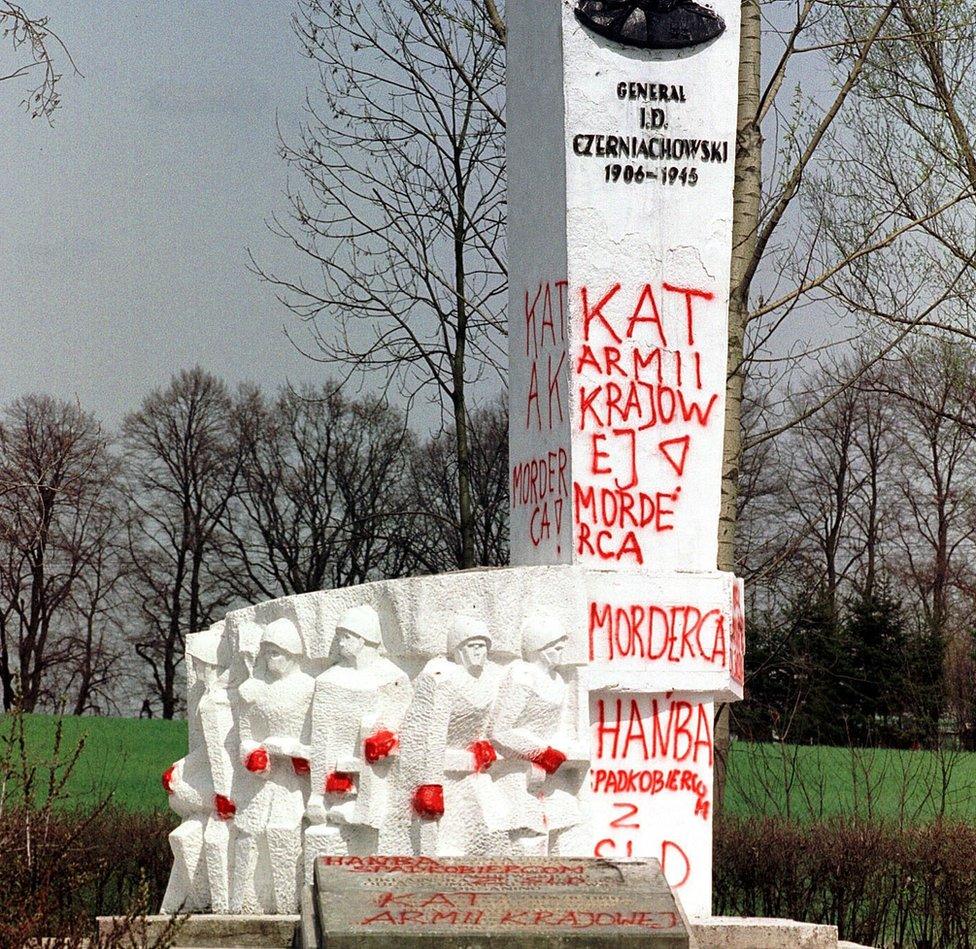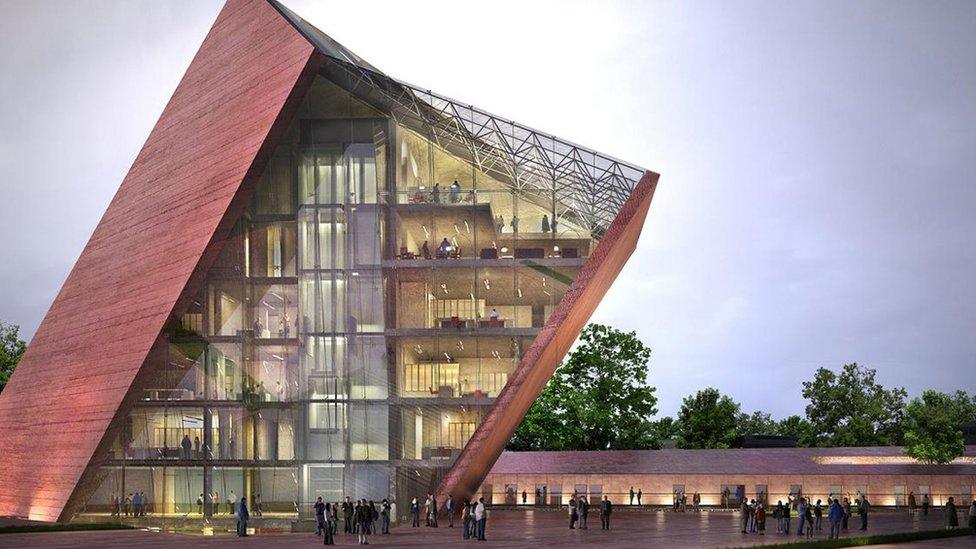Soviet troop monuments in Poland to be moved to new museum
- Published

Poles have long tried to purge statues such as this one for the founder of the Soviet secret service, toppled in 1989
More than 200 monuments marking the Soviet army's liberation of Poland at the end of World War Two are to be moved to an open-air museum.
They were erected to glorify the Red Army's vital role in ousting the Nazis.
But many Poles say it also ushered in four decades of Soviet-inspired communism, and want the monuments to be displayed in historical context.
The plan could anger Russia, which has not been consulted. Relations between both countries are tense.
The Institute of National Remembrance (IPN) proposes to house the monuments in a park in the former Soviet base at Borne Sulinowo, a small town north-west of Warsaw, where they will be used for the purpose of teaching history.
Andrzej Zawistowski, director of the IPN's education department, said the plan includes 229 monuments that refer to "what we consider as untruth: gratitude for having given Poland independence."
Poland, now a western ally and Nato member, sees the Soviet domination following the end of the war as a period of oppression, and its relations with Moscow have been strained for some years.
Poland and Russia are loggerheads over a number of issues, notably Russia's policy on Ukraine and EU sanctions on Moscow.
The plan is diplomatically sensitive.
The Kremlin protested strongly when a Soviet monument was removed from the town of Pieniezno last year.

The monument for a Soviet general in Pienieczno had been defiled before it was removed last year
Russia says it exposed a lack of gratitude for the sacrifice of the Soviet troops who freed Poland from the Nazis. More than 20 million Soviet soldiers died in World War Two.
Moscow argues that Poland is obliged to protect all war memorials under a 1994 bilateral agreement with Russia.
But Poland says the agreement covers only cemeteries, which are not affected under the plan.
"The plan will include only monuments expressing the gratitude towards the Red Army, and it will not affect Soviet cemeteries," said Mr Zawistowski.
"The educational park will show these monuments within the right historical context," Mr Zawistowski said. "Educational parks and institutions of this type exist equally in other states such as Lithuania, Hungary or even Russia."
The institute says it will help with the removal of the monuments and their installation in the museum.
But it is up to city councils whether they want them cleared.
- Published7 November 2010
- Published13 April 2013

- Published5 May 2016
